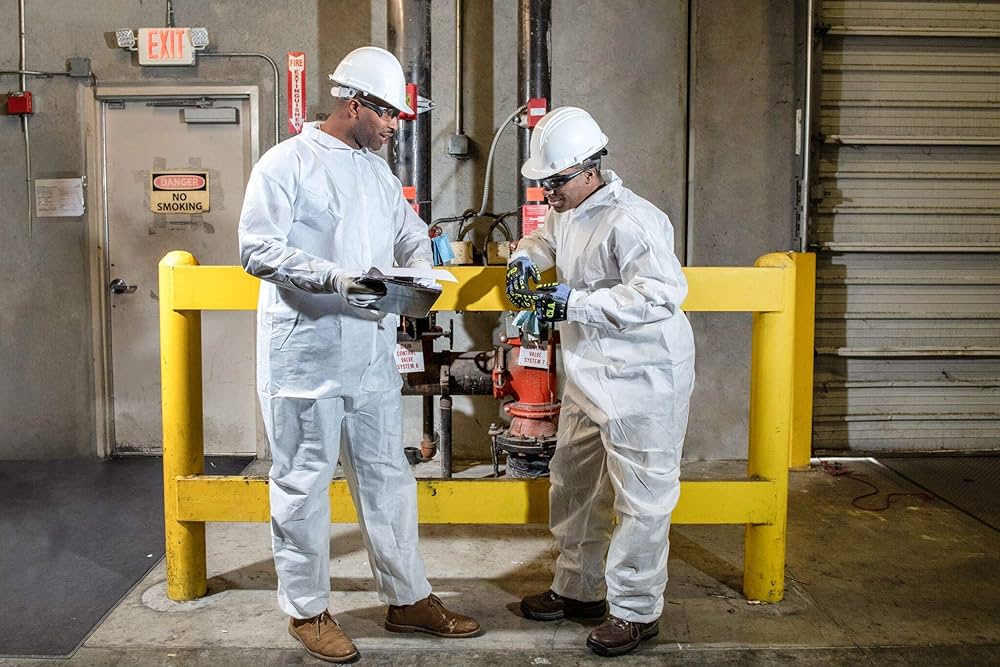Disposable coveralls are an essential part of personal protective equipment that protects people from hazardous materials, dust, and chemicals. They come in different materials, including fabric, plastic, and paper. However, not all of them are resistant to water. Choosing water resistant disposable coveralls is critical for protecting workers in wet environments or working with liquids. In this article, we will discuss the types of disposable coverall materials that are water-resistant.
Table of Contents
Polyethylene
Polyethylene is a plastic material that is commonly used to make disposable coveralls. It is lightweight, breathable, and water-resistant, making it an ideal material for applications that require protection against moisture. In fact, polyethylene disposable coveralls are the most water-resistant among all disposable coverall materials. They are often used in industries like agriculture, painting, automotive, and chemical processing. Polyethylene disposable coveralls are easy to wear and take off, and they provide excellent protection against dirt, dust, and liquids.
Tyvek
Tyvek is a popular material for disposable coveralls that offers excellent protection against dust, dirt, chemicals, and biological particles. It is a synthetic fabric that is made of high-density polyethylene fibers. Tyvek is water-resistant and acts as a barrier against liquids, making it an ideal material for applications that require protection against water, such as outdoor work, painting, and automotive work. Tyvek disposable coveralls are durable, lightweight, and provide excellent breathability, making them comfortable to wear for extended periods.
SMS (Spunbond Meltblown Spunbond)
SMS is a composite material that consists of three layers of different materials- spunbond polypropylene, meltblown polypropylene, and spunbond polypropylene. SMS disposable coveralls are lightweight, breathable, and water-resistant, making them suitable for use in wet environments. The spunbond polypropylene layer makes them durable, while the meltblown polypropylene layer acts as a barrier against liquids.

Microporous film
Microporous film disposable coveralls are made of a breathable material that is water-resistant. They consist of a microporous polyethylene film that is bonded to a nonwoven polypropylene material. The film layer provides a barrier against liquids, while the nonwoven polypropylene layer makes them durable. Microporous film disposable coveralls are commonly used in the construction, chemical, and pharmaceutical industries. They provide excellent protection against liquid splashes and dust and are breathable, making them comfortable to wear.
CPE (Chlorinated Polyethylene)
CPE is a plastic material that is chemically resistant and waterproof. It is commonly used to make disposable gowns, gloves, and shoe covers. CPE disposable gowns are resistant to tears and abrasions, making them durable and long-lasting. They provide excellent protection against liquid splashes and hazardous chemicals, making them suitable for use in chemical plants, pharmaceuticals, and laboratories.

Choosing the right disposable coverall material is critical for protecting workers in hazardous environments. Water resistant disposable coveralls are essential for protecting workers in wet environments or working with liquids. Polyethylene disposable coveralls are the most water-resistant among all disposable coverall materials, while Tyvek, SMS, Microporous film, and CPE are also water-resistant materials that provide excellent protection against liquids. When selecting disposable coveralls, it is essential to consider the application and the level of protection required. With the right disposable coveralls, workers can remain safe and protected in hazardous environments.


